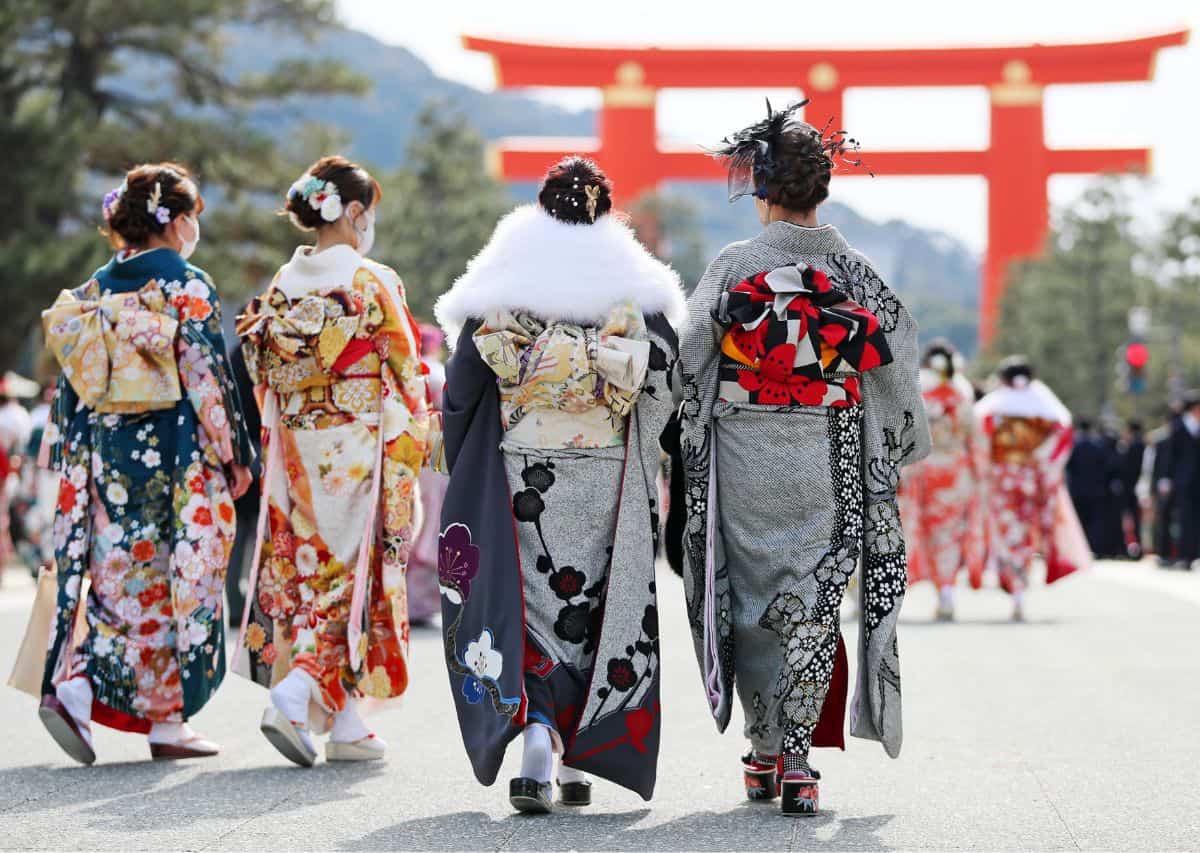Asian Americans are a diverse and vibrant community with a rich cultural heritage. They are the fastest-growing racial group in the United States, and their influence is felt in all aspects of American life. However, Asian Americans face unique challenges and opportunities as they navigate their cultural identities. This blog post will explore the Asian American experience, from their challenges to shared experiences that unite them.
Navigating the Asian American experience
Embarking on a journey to understand the Asian American experience unveils a kaleidoscope of complexities where individuals navigate the intricate dance between assimilation and cultural preservation. The challenge lies in finding a harmonious balance, ensuring that the essence of their heritage remains intact while embracing the nuances of American society. This delicate balancing act often leads to a profound sense of inauthenticity, a yearning for the familiar amidst the allure of the unfamiliar.
As they traverse this path, eastern Americans confront a formidable adversary: the persistent presence of stereotypes and discrimination. The weight of these preconceived notions bears down on their shoulders, perpetuating the image of perpetual foreigners, irrespective of their generational roots or citizenship status. This pervasive bias manifests in various forms, from the insidious whispers of passive submissiveness to the glass ceilings that hinder their ascent to leadership positions. These obstacles obstruct their path to equal opportunities, casting a shadow over their dreams and aspirations.
Yet, amidst these challenges, the spirit of Eastern Americans shines with unwavering resilience and determination. They have etched their mark on the tapestry of American society, excelling in diverse fields, from the ivory towers of academia to the bustling world of business, from the creative realms of art to the influential sphere of politics. Their contributions have enriched the nation’s cultural fabric, introducing various perspectives and traditions woven into America’s essence.
The Asian American experience is a testament to the indomitable human spirit, an enduring saga of perseverance and adaptation. Through the trials they have faced and the triumphs they have achieved, eastern Americans have become an inspiration to us all. Their stories are a poignant reminder of the imperative to embrace diversity and foster inclusion, recognizing that everyone possesses a unique thread to weave into society’s rich tapestry.
Unveiling the mosaic: Shared experiences of Asian Americans
The Eastern American experience is a rich tapestry of shared experiences that bind diverse communities together. Immigration is a common thread, a journey undertaken by countless individuals seeking a better life for themselves and their families. The pursuit of education, professional success, and economic prosperity are aspirations shared by many Eastern Americans, driving their determination to succeed in the face of challenges and obstacles.
Cultural traditions and values are pivotal in shaping Eastern American families and communities. Confucian principles of respect for elders, filial piety, and strong family ties are deeply ingrained in the East American psyche. These values serve as a moral compass, guiding individuals personally and professionally. Religious beliefs, such as Buddhism, Hinduism, and Christianity, also contribute to the cultural fabric of Eastern American communities, providing spiritual solace and a sense of belonging.
Navigating multiple cultural identities can be a complex task for Eastern Americans. Growing up in a society that often perpetuates stereotypes and biases can lead to feelings of alienation and invisibility. Balancing the preservation of cultural heritage with the assimilation into mainstream American culture is a delicate dance, often requiring individuals to code-switch between different cultural contexts. Language and accents can further shape Eastern American experiences, becoming a source of pride and a barrier to overcome.
Despite these challenges, eastern Americans have made immense contributions to American society. Their entrepreneurial spirit has fueled economic growth, their intellectual prowess has enriched academia and research, and their artistic talents have graced the entertainment world. Eastern American activists and advocates have tirelessly fought for civil rights, social justice, and representation, leaving a lasting legacy of empowerment and progress.
The shared experiences of Eastern Americans form a mosaic of resilience, determination, and cultural pride. By acknowledging and celebrating these commonalities, we can foster a more inclusive society that values all individuals’ unique perspectives and contributions.
Asian Americans in the media: Representation and stereotypes
Historically, Asian Americans have faced limited representation in mainstream media, resulting in a scarcity of visibility and comprehension of their varied backgrounds and viewpoints. Despite their notable contributions to American society, they are frequently depicted in stereotypical roles perpetuating harmful narratives.
One such stereotype is the “model minority” myth, which portrays Asian Americans as uniformly successful and lacking individual challenges. This oversimplification erases the diversity of their experiences and ignores the struggles they may face. Another prevalent stereotype is the “perpetual foreigner” stereotype, which implies that Eastern Americans are permanent outsiders in American society, regardless of their generational status. These stereotypes restrict the portrayal of Eastern Americans as complex individuals, leading to the marginalization of their true identities.
Fortunately, recent years have witnessed a surge in Asian-American-driven media platforms and content creators actively challenging these stereotypes. These platforms provide authentic representation by presenting multifaceted narratives that showcase the richness and diversity of Eastern American experiences. They disrupt the dominant narratives that have historically marginalized Eastern Americans and create a space for them to share their unique stories and perspectives.
Supporting Asian American-led media platforms and content creators is crucial in amplifying their voices and fostering a more inclusive media landscape. This benefits Eastern Americans by providing visibility and validation and enriches American society. By embracing diverse representation, we gain a more accurate and comprehensive understanding of the population, fostering a sense of belonging for Asian Americans and educating others about the complexities of their experiences and identities.
The power of unity: Asian American activism and advocacy
Throughout history, Asian Americans have demonstrated unwavering resilience and solidarity in adversity. They have played a pivotal role in social justice movements, fighting for civil rights, racial equality, and the well-being of marginalized communities. Asian American activism has taken many forms, from grassroots organizing to political advocacy to artistic expression.
One notable example of Asian American activism is the Asian American Movement of the 1960s and 1970s. This movement emerged in response to the discrimination and racism experienced by Asian Americans, particularly in the wake of the Vietnam War. Activists fought for immigration reform, language access, and equal education and employment opportunities. Their efforts led to significant legislative victories, such as the Immigration and Nationality Act of 1965, which abolished the national origins quota system that discriminated against Asian immigrants.
Asian Americans have also played a significant role in broader social justice movements. They have been involved in the fight for civil rights, women’s rights, and LGBTQ+ rights, among others. Asian American activists have brought their unique perspectives and experiences to these movements, helping to build broader coalitions and strengthen the fight for justice.
In recent years, there has been a surge in Asian American advocacy organizations working to address various community issues. These organizations provide vital services, such as legal assistance, healthcare access, and education programs, and advocate for policies that promote equity and inclusion. They also work to combat anti-Asian racism and discrimination, which the COVID-19 pandemic has exacerbated.
The power of Asian American activism and advocacy lies in its ability to amplify the voices of the community, challenge stereotypes, and bring about positive change. By working together, Asian Americans can continue building a more just and equitable society.
Conclusion
Asianismo, the global celebration of Asian culture and its impact, is a dynamic and enthralling movement that never stops inspiring and changing. The Asian American experience is a mosaic of triumphs, challenges, and aspirations. While they have faced discrimination and underrepresentation, Asian Americans have also showcased remarkable resilience and made immeasurable contributions to American society. They have fought for civil rights, social justice, and the well-being of marginalized communities, leaving an indelible mark on the nation’s history.
As the Asian American community continues to grow and evolve, their cultural identity remains a dynamic work in progress. The struggle for visibility and representation persists, but there is a growing movement of Asian American-driven media platforms and content creators who challenge stereotypes and present authentic narratives. By supporting these platforms and advocating for inclusivity, we can create a more equitable media landscape that reflects the rich diversity of Asian American experiences.
The collective power of Asian Americans lies in their ability to amplify their voices, uplift one another, and work towards a more just and equitable society. Through activism, advocacy, and a shared commitment to progress, Asian Americans can continue to shape their cultural identity and make their presence felt in all spheres of American life.










